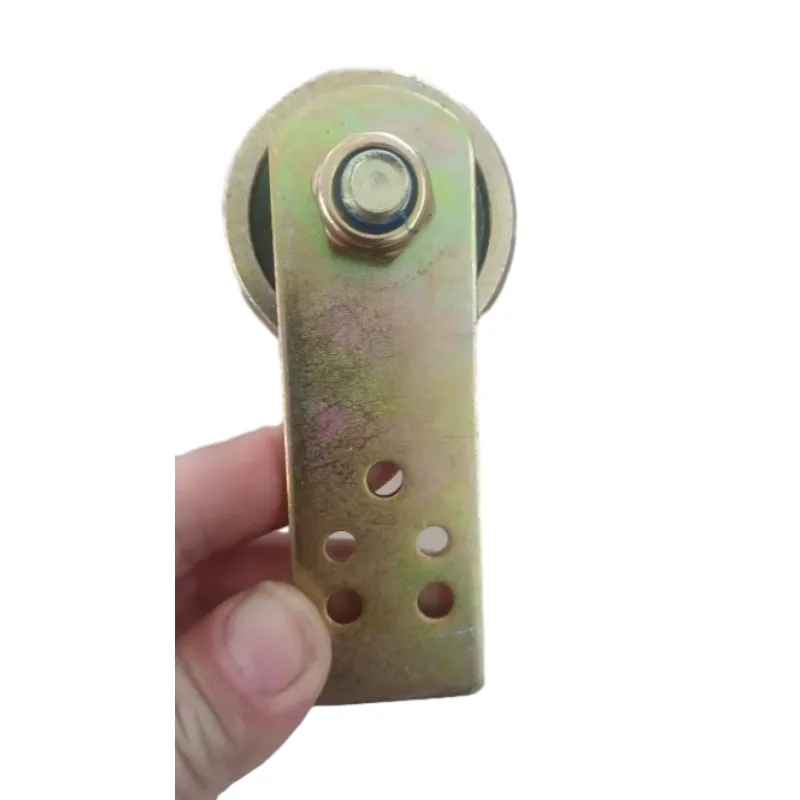
ធ្នូ . 17, 2024 02:34 Back to list
four row cylindrical roller bearing
Understanding Four-Row Cylindrical Roller Bearings
Four-row cylindrical roller bearings are sophisticated components designed to support heavy loads while ensuring smooth rotation and minimal friction. These bearings are particularly prevalent in applications requiring high radial load capacity, such as in rolling mills, steel processing machinery, and large industrial equipment.
Structure and Design
The four-row cylindrical roller bearing comprises four rows of cylindrical rollers arranged in a cage. This unique arrangement allows the bearing to distribute the load more evenly across the rollers, enhancing its load-carrying capacity compared to single-row or double-row designs. Each set of rollers is separated by a rib or cage, which keeps the rollers aligned and reduces the chances of roller slippage, a common issue in bearings subjected to high loads.
The design also features two outer rings and two inner rings, which provides increased stability and ensures proper spacing for the rollers. This architecture is tailored for minimal internal clearance, enhancing performance under radial loads. The four-row configuration also translates into a longer service life due to reduced wear and tear on individual components.
Performance Benefits
One of the primary advantages of four-row cylindrical roller bearings is their superior load capacity. They are designed to handle not just radial loads but also axial loads to a certain extent, making them suitable for applications where multidirectional forces are present. Their robust design allows them to function effectively in harsh operational environments, including those with high temperatures, dust, and moisture.
Additionally, these bearings offer lower frictional resistance, which is crucial for energy efficiency
. In applications like wind turbines and industrial machinery, where energy savings can significantly impact operating costs, four-row cylindrical roller bearings contribute positively by reducing energy losses during operation.four row cylindrical roller bearing

Applications
The versatility of four-row cylindrical roller bearings makes them suitable for various applications. In the steel industry, these bearings are integral to machinery such as rolling mills, where they withstand high loads and harsh conditions. Their reliability ensures continuous operation, which is crucial for maintaining production efficiency.
In the manufacturing sector, these bearings are found in heavy machinery like lathes, grinders, and milling machines, where precision and load handling is vital for product quality. They are also used in construction equipment, such as cranes and excavators, due to their ability to bear substantial loads while providing stable support.
Maintenance and Care
Although four-row cylindrical roller bearings are designed for durability, regular maintenance is essential to ensure optimal performance. Routine inspections can help identify signs of wear, contamination, or misalignment. Lubrication is another critical factor; using the proper type and amount of lubricant can significantly extend the bearing's lifespan and performance. It helps to reduce friction and dissipate heat generated during operation.
Operating conditions should also be monitored to prevent overload situations that could lead to premature bearing failure. By adhering to manufacturer guidelines regarding load limits and environmental conditions, operators can maximize the efficiency and lifespan of these bearings.
Conclusion
Four-row cylindrical roller bearings are vital components in many industrial applications, offering exceptional load-carrying capacity and durability. Their robust design and ability to operate efficiently under demanding conditions make them indispensable in sectors such as manufacturing, construction, and steel production. By investing in quality bearings and adhering to maintenance best practices, organizations can ensure reliable operation and minimize downtime, ultimately driving productivity and profitability.
Latest news
-
The Future of Deep Groove Ball Bearings For Extreme Applications
NewsJul.31,2025
-
Self-Lubricating Bearings: The Future of Agricultural Machinery Efficiency
NewsJul.31,2025
-
Nanotechnology in Ball Bearing Machines: The Future of Friction Reduction
NewsJul.31,2025
-
How Deep Groove Ball Bearings Are Tailored for Different Uses
NewsJul.31,2025
-
Energy-Efficient Machinery Bearings: Reducing Power Consumption in Large-Scale Ball Mills
NewsJul.31,2025
-
Deep Groove vs. Angular Contact: Which Ball Bearing Wins in High-Speed Applications
NewsJul.31,2025
